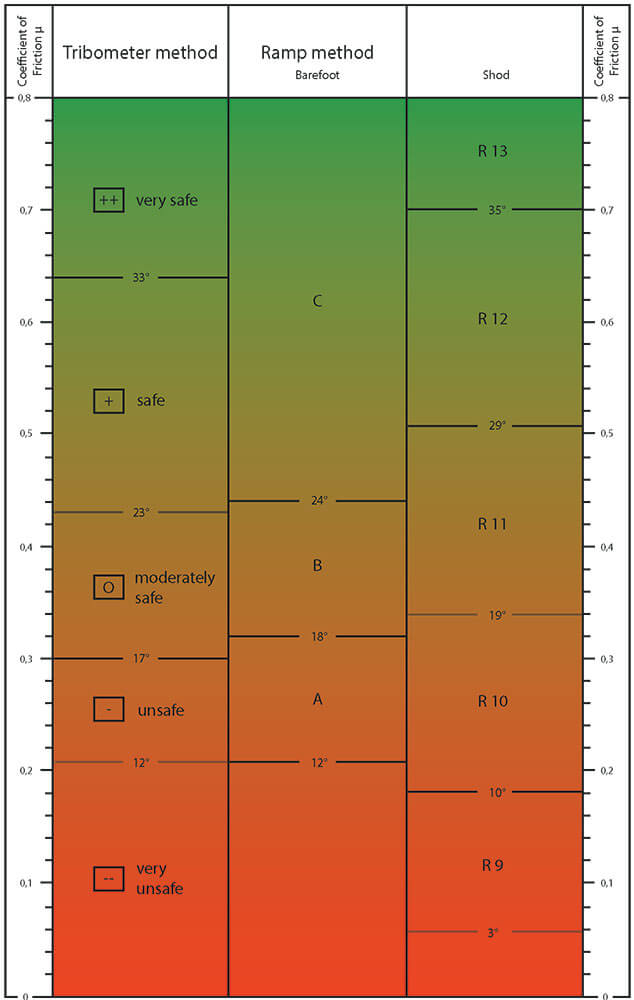Keeping up with Coefficient of Friction Standards
Services
It is natural for us to live and breath coefficient of friction standards in our business. Read about our latest updates regarding coefficient of friction standards here.
We live and breathe within the international Coefficient of Friction standards. We ensure that we understand them, conform to them, test them then provide the results. We always ensure that all our Coefficient of Friction (CoF) data is freely published for anyone to inspect and use. We always use external testing laboratories as this ensures that our probity cannot be doubted. The testing laboratories we use are registered with official bodies.
I want to talk about the European Technical Specification CEN/TS 16165 and how Heskins® conforms to it. CEN/TS 16165 is a further development of other international CoF standards. It brings four testing methods into one standard, thus allowing cross-inspection and an ability to either use multiple standards for one product or comparisons if tested under different procedures. CEN/TS 16165 is split into four annexes, they are;
Annex A
This annex is based on DIN51097. DIN51097 is a ramp incline standard, the subject is barefoot and secured with a harness and standing on an incrementally inclined ramp surface. Once the subject slips, then this determines the rating, eight tests are required, based on two people. There are some stipulations prior to testing based on the subject’s ability to walk on the surface without an incline. DIN51097 produces results that are from A to C, C having the highest CoF rating. Heskins® does test to DIN51097 but, we only test barefoot focused materials.
Annex B
This annex is based on DIN51130. DIN51130 is a ramp incline standard, the subject wears specified safety boots and secured with a harness and standing on an incrementally inclined ramp surface. Once the subject slips, then this determines the rating, six tests are required, based on two people. There are some stipulations prior to testing based on the subject’s ability to walk on the surface without an incline. DIN51130 produces results that are from R9 to R13, R13 having the highest CoF rating. DIN51130 is a common test for Heskins®.
Annex C
This annex is based on BS7976. BS7976 is a standard based on using a pendulum. The pendulum is released from a 90° angle the distance of the swing determines the result. The test is performed a minimum of eight times in each direction, at least two directions with the result being an average of the last five measurements. BS7976 is normally referred to as Pendulum or PTV (Pendulum Test Value) It is the most common CoF test in the world. BS7976 is widely tested for Heskins® materials.
Annex D
This annex is based on using a tribometer. A tribometer is a machine that pulls a slider, of fixed shape and material, over the testing surface. The energy required is translated into a result. Heskins® does not test with tribometers. Although they can provide effective results, they can struggle with irregular surfaces. This gives erratic results due to uneven movements and can be affected by an effect known as ‘stiction’ which can provide results that are too high.
The table below provides further clarification of the component elements of CEN/TS 16165.
Download the table here.
For more information, you can speak to a member of our sales team via live chat or phone. Alternatively, complete the contact us form and we will get back to you as soon as possible.

